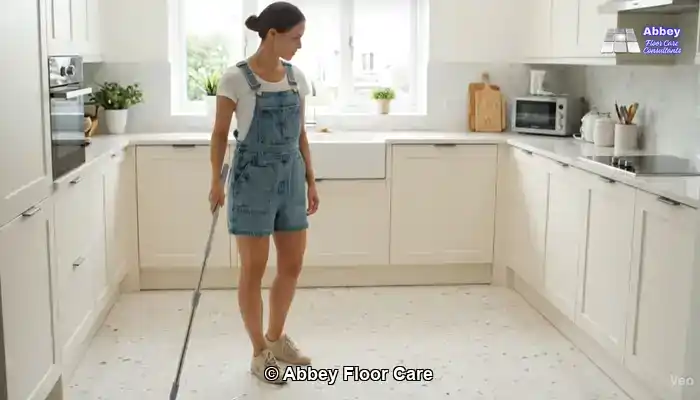Choosing the ideal interior lighting solutions for your home might seem simple initially. However, stepping into a lighting showroom filled with endless options can make the decision-making process feel daunting. To ensure you don’t end up with a poorly lit environment that doesn’t serve its intended purpose, it’s crucial to assess your specific lighting requirements for each room in your home. Understanding your lighting preferences will not only enhance the aesthetic appeal of your spaces but also elevate their functionality.
Enhance Your Home’s Functionality and Aesthetic Appeal with Strategic Lighting Selections
Before you begin your journey to select the perfect lighting, ask yourself some vital questions:
What specific activities will take place in this space, and how will each area be utilized throughout the day?
Consider the various ways the room will be used at different times, allowing the lighting to amplify your experiences. For example, living rooms often cater to numerous functions, so integrating a diverse range of lighting solutions can create a flexible and inviting atmosphere.
Understanding the core types of lighting and mastering the art of layering them is essential for achieving effective illumination in your home. There are three principal categories of lighting to consider:
1. Ambient (General) Lighting
2. Task Lighting
3. Accent Lighting
Maximizing Your Space with Effective Ambient or General Lighting
Ambient lighting establishes the primary brightness level in a room, providing essential illumination necessary for safe navigation and visibility. This type of lighting is typically the first switch you reach for upon entering a room, remaining on for the majority of your time spent there, creating a welcoming atmosphere.
Utilizing energy-efficient LED bulbs is highly recommended, as they significantly reduce energy consumption while providing ample brightness. Ambient lighting lays the groundwork upon which all other lighting types are layered and designed.
It serves as the foundation of your home’s overall lighting strategy.
While individual fixtures like floor lamps or table lamps can enhance your space, ambient light is predominantly generated through overhead fixtures, including:
- Recessed lighting
- Track lighting
- Chandeliers
- Ceiling fans
- Area lights
When selecting light bulbs for your ambient lighting, prioritize lumens rather than watts. Traditionally, the brightness of a bulb was often equated with its wattage, which actually measures energy consumption. With the advent of energy-efficient choices like CFLs and LEDs, lumens now provide a more accurate measurement of brightness.
Customizing Lighting Selections to Suit Your Unique Space
If your home features high ceilings or requires lighting over islands and dining areas, suspended or pendant lighting is an excellent selection. Ensure that pendant lights hang no lower than 75cm (30 inches) from countertops or tables to maintain a clear line of sight and avoid obstructing views.
Moreover, consider the dimensions of your space when choosing pendant lighting. Smaller rooms benefit from lighter, more compact fixtures, while larger areas can accommodate more dramatic and substantial lighting options to create a striking visual impact.
If additional illumination is necessary, feel free to incorporate supplementary light sources to achieve a well-lit and inviting environment.
Choosing the Right Lumen Output for General Lighting Needs
For general lighting purposes, the brightness required in a room doesn’t need to be as intense or concentrated as that needed for task or accent lighting. A professional electrician can assist you in determining the appropriate lumen output necessary to achieve optimal lighting for your individual room.
Often, a single light fitting with the correct bulb can be sufficient for general illumination. However, you can also enhance your lighting arrangement by adding more fixtures or selecting recessed downlights for a more uniform distribution of ambient light throughout the space.
When planning for recessed lighting, aim for approximately one fixture for every 4 square feet of ceiling space to guarantee adequate coverage and effective illumination.
Elevating Daily Activities with Purposeful Task Lighting
Consider the various activities that may require additional lighting, such as reading in bed, cooking in the kitchen, engaging in craft projects, or applying makeup in the bathroom. This type of lighting, known as task lighting, is specifically engineered to illuminate areas where focused light is essential.
Task lighting can emanate from diverse sources, including spotlights, recessed lights, desk lamps, and table lamps, providing the necessary brightness to facilitate a variety of activities effectively.
Essential Tips for Achieving Effective Task Lighting
While brightness is a critical factor, task lighting should not inundate the entire room with excessive light. Look for fixtures that offer adjustability, such as those with dimming capabilities or movable arms that can be positioned as needed for various tasks.
Choosing the Ideal Color Temperature for Your Lighting
When selecting bulbs, take the color temperature into account. Warmer bulbs are perfect for evening reading sessions, while cooler bulbs are more suitable for spaces like the bathroom, providing a natural daylight effect ideal for makeup application.
Placement is also a crucial factor. Desk and table lamps should be adjustable and directed downward to concentrate light on your tasks while minimizing glare and shadows, ideally positioned at the side of your workspace for maximum effectiveness.
Harnessing Accent Lighting to Emphasize Key Features in Your Home
Creative Applications for Accent Lighting
Accent lighting plays a vital role in drawing attention to artwork, plants, and architectural details, while also serving as decorative illumination. Commonly referred to as directional lighting, this type of lighting is intentionally designed to create captivating focal points within a space.
Accent lighting effectively highlights specific features, such as an exquisite piece of art or an intriguing plant, while subtly illuminating architectural elements like wall textures or decorative coving.
Properly designed accent lighting should channel at least three times as much light to the focal point as it does to the surrounding areas of the room, ensuring the feature stands out without drawing undue attention to the lighting itself.
When integrating accent lighting, prioritize aesthetics over functionality. Additionally, don’t overlook natural light; your room may receive ample daylight, leading you to underestimate the necessity for sufficient ambient lighting during evening hours.
Incorporating dimmers can enhance flexibility, allowing you to adjust the lighting to suit your specific needs and preferences.
Designing Comprehensive Kitchen Lighting Solutions
The kitchen is often regarded as the heart of the home, where family members congregate not only to prepare meals but also to engage in various activities. Thus, it demands a thoughtful combination of different lighting types to accommodate its multifunctional nature.
A common pitfall in kitchen lighting design is relying on a single light source or a basic track lighting system, which can result in uneven illumination, glare, and shadows on work surfaces. To optimize your kitchen's functionality, implementing flexible lighting solutions with strategically positioned fixtures that enhance usability both during the day and at night is essential.
Task and accent lighting work synergistically to supplement natural light during daylight hours while providing general illumination throughout the evening. Given that kitchen lighting is often left on for extended periods compared to other areas of the home, upgrading to energy-efficient bulbs such as CFLs or LEDs can significantly reduce heat output, making them well-suited for under-cabinet and task lighting.
Task lighting is critical for delivering concentrated illumination where it counts most in the kitchen environment.
Key areas requiring task lighting in the kitchen include:
- Countertops
- Islands
- Sinks
- Stovetops
- Inside cabinets and drawers
- Under-cabinet lighting
Maximizing Practicality with Under-Cabinet Lighting Solutions
Under-cabinet lighting serves as an effective means to provide targeted task lighting, illuminating areas where it is most needed while avoiding unwanted shadows.
Many kitchen surfaces, such as granite and marble, are highly reflective. Therefore, it’s crucial to select under-cabinet lighting that offers a diffused light source to minimize glare, like LED strips directed toward the wall.
Integrating Suspended Lighting for Aesthetic and Functional Benefits
Pendant lights can fulfill both aesthetic and practical roles within a kitchen environment. They provide ambient light that radiates in all directions, and when strategically placed, these fixtures can also serve as stylish task lighting over essential areas like your kitchen island or sink.
Effectively Utilizing Recessed Lighting in Your Kitchen Design
Recessed lighting is an excellent choice for spaces with low ceilings. If you opt for recessed fixtures, it’s imperative to install them sufficiently close to cabinets to provide effective overhead lighting where you’ll be working; otherwise, you may encounter shadows on your countertops.
Aim to position the lights approximately 60cm from the walls, ensuring that the center of the light beam effectively illuminates the edges of the countertops.
Incorporating Accent Lighting to Enrich Your Kitchen Design
Accent lighting in the kitchen is instrumental in showcasing features such as artwork on the walls or decorative items on countertops, adding character and visual appeal to the area.
There are several inventive ways to infuse accent lighting into your kitchen design:
Consider using LED light strips under cabinets or incorporating baseboard lighting. Additionally, if your kitchen features high ceilings, pendant lights or wall sconces positioned above the sink can deliver both accent and functional task lighting.

Creating a Cozy and Inviting Living Room Environment
The living room serves as a central gathering space for family members and is often one of the first areas guests encounter. Therefore, it should be well-lit, taking into account both functionality and aesthetics to establish a warm and inviting ambiance.
The lighting in this room must support a variety of activities, such as reading, socializing, or watching a movie. If your living room includes a television, avoid placing ceiling lights directly above or in front of the screen, as this can produce distracting glare.
Instead, choose accent lighting that can be dimmed or easily turned off to improve your viewing experience, minimizing light interference during dark scenes.
Innovative Concepts for Ambient Lighting in Your Living Room
Implement a large central ceiling light, such as a stunning chandelier or pendant, to act as the focal point of your living room. If you opt for multiple light sources, ensure they are evenly distributed to avoid overly bright spots and harsh shadows.
Opaque lampshades and frosted glass diffusers can effectively balance the lighting, creating a softer glow throughout the space. For entertaining guests, appropriate ambient lighting is paramount; warm-toned, dimmable bulbs contribute to an inviting atmosphere that fosters conversation and relaxation.
Implementing Task Lighting to Boost Focus and Productivity
Task lighting is specifically designed to produce bright, focused light that enhances visibility for particular activities, providing much-needed eye relief. For avid readers or hobbyists, the right lighting allows you to concentrate on your work while alleviating eye strain.
Lamps that offer adjustable brightness and positioning are the most effective sources of task lighting. Consider lamps equipped with dimming options or those that provide multiple brightness levels to accommodate various tasks seamlessly.
Position task lamps strategically at desks, hobby tables, and beside your favorite reading chair to increase functionality and enhance the overall experience.
Creating Visual Appeal with Accent Lighting Techniques
Accent lighting is fundamental for adding visual interest and emphasizing key features in your living room. Use it to spotlight artwork, architectural details, or decorative elements such as textures and mouldings, enhancing the overall aesthetic.
Showcasing Cabinets and Shelves through Thoughtful Lighting
Illuminating open shelves or cabinets is an excellent method to showcase cherished items, such as china, glassware, or decorative pieces. Consider employing fairy lights or LED strips in display cases and on bookshelves to subtly highlight your collections.
You can also hang fairy lights around houseplants to create soft pockets of light, adding an enchanting touch to your living space and enhancing its overall charm.
To assist in planning your home lighting effectively, consult a qualified electrician who specializes in lighting design, offering valuable insights tailored to your specific needs.
The Article Interior Lighting Options For Your Home was found on https://limitsofstrategy.com
The Article Interior Lighting Ideas to Brighten Your Home First Appeared ON
: https://ad4sc.com















Harald Crosby
You make such a great point about how lighting can change the way we experience our homes. I recently revamped my living room and invested in dimmable lights, which has made a world of difference. Now I can create the perfect ambiance for cozy movie nights or bright, inviting spaces for gatherings.